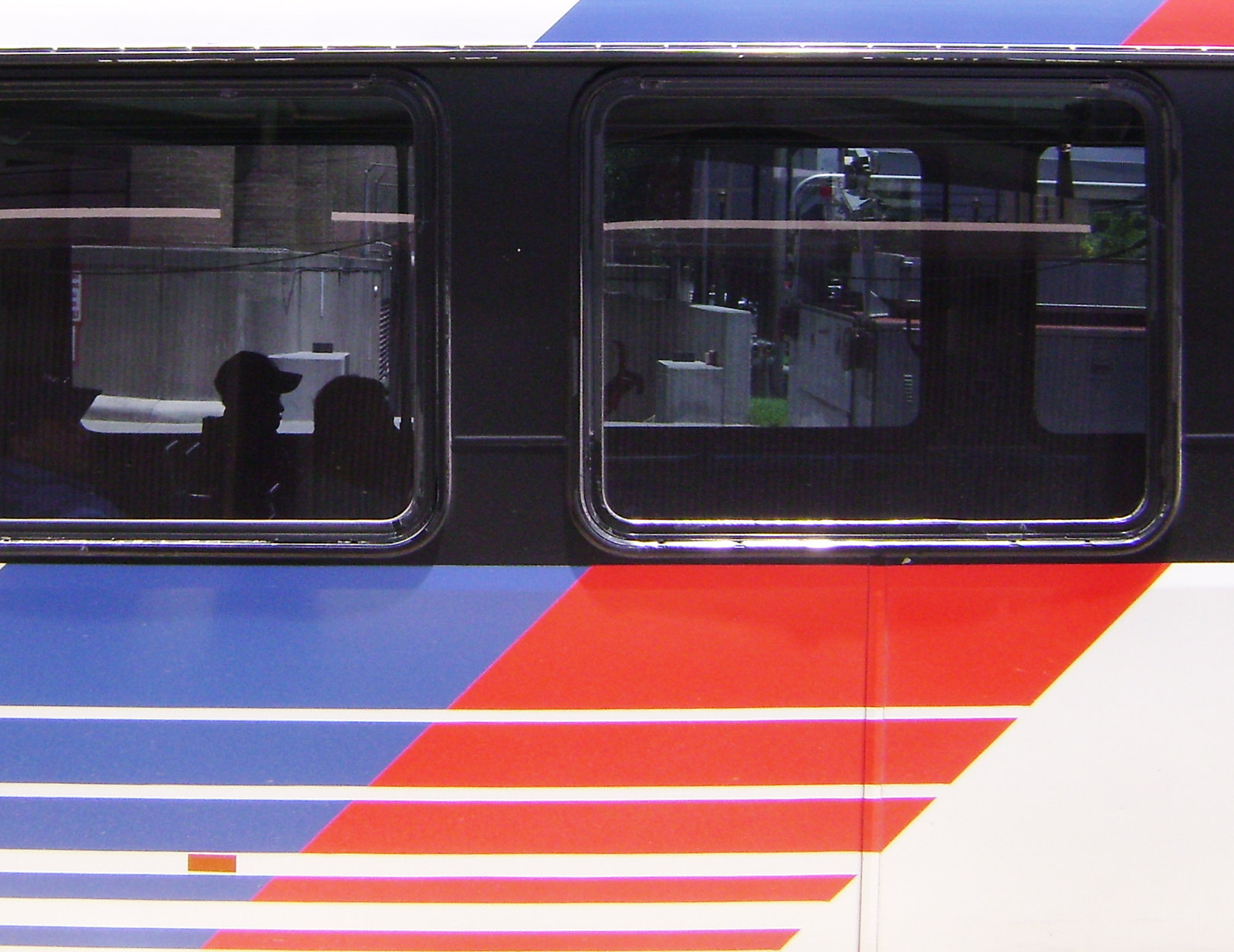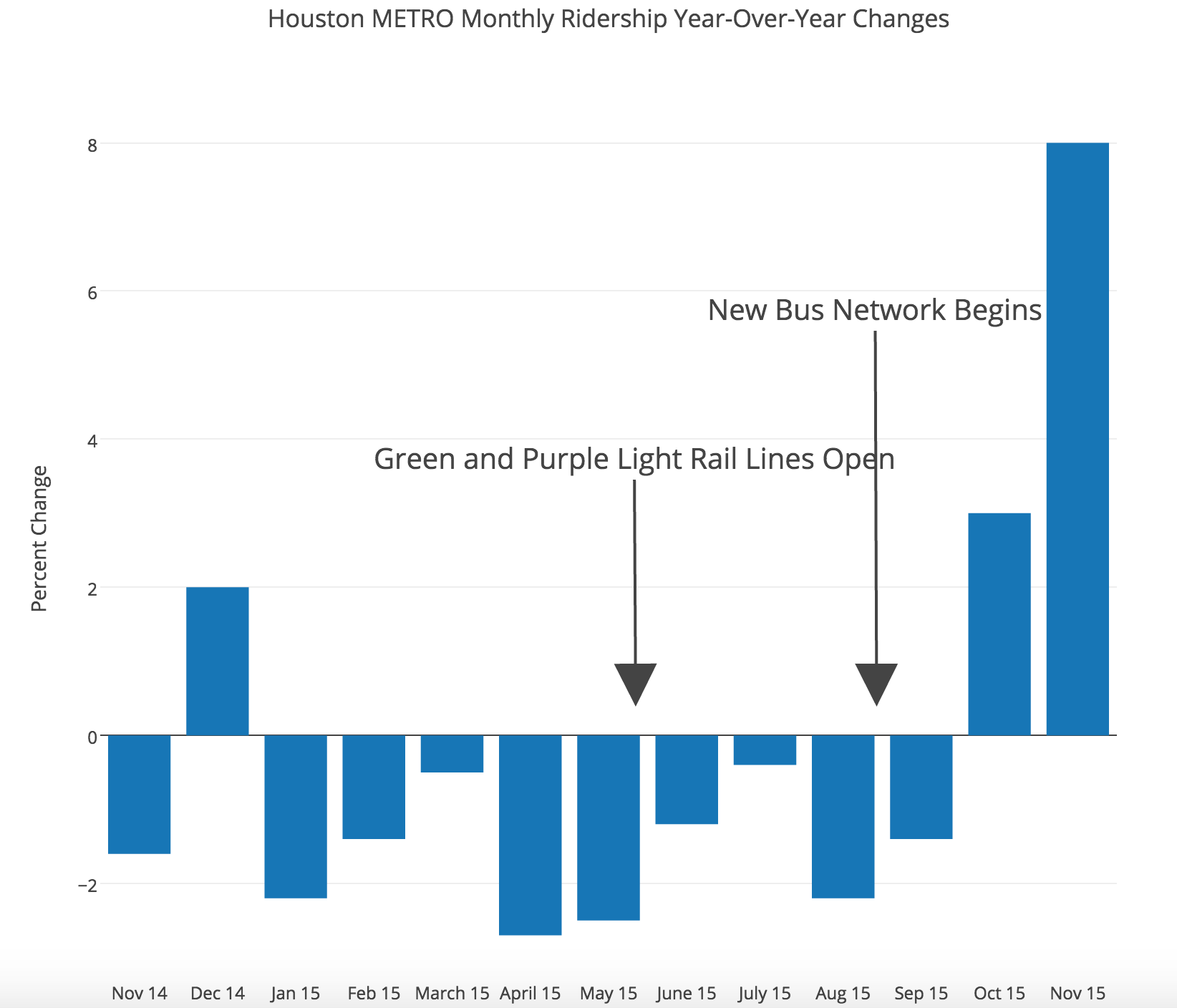Houston’s new bus network is showing signs of increased ridership, but the people behind the overhaul aren’t quite ready to declare victory.
To recap some history: back in August, METRO, the Houston-area’s transit agency, made major changes to its bus network and replaced a hub-and-spoke system with one that looked like a grid. It also increased the number of high-frequency routes and expanded weekend service. Nearly every bus route changed.
Five months after launching the new bus network – a budget-neutral change that replaced a system geared towards taking people downtown in large volumes into one with frequently arriving buses that deliver people to a variety of locations in the region – ridership is up.
But the consultants who helped fashion the new network are being cautious.
Mostly that’s because with just two full months of data on the new bus network’s ridership, it’s too early to know exactly what’s in store in the long-term.
One of those consultants, Jarrett Walker, said he’s holding off on comments until there’s one more month of data, enough to draw at least three-point trend line.
Walker told Houston METRO that the new network would increase total system ridership 20 percent after two years of operation, assuming the agency markets and manages the system well.
More people began using the system on weekends right away, but weekday ridership on local buses actually fell.
In November, the most recent month for which data is available, METRO enjoyed ridership year-over-year increases across the board – weekdays, Saturday and Sunday – on both buses and light-rail.
In November 2015, METRO had 4.85 million total bus boardings, up from 4.65 million in November 2014.
Here’s how the percentage changes in ridership from one month to the next look over the last 12 months, for local buses, light-rail and the system as a whole.
Geoff Carleton, principal with the firm Traffic Engineers, Inc., the local planning firm that led the system overhaul said he too thinks it’s still too early to draw conclusions, but he’s happy the trajectory is positive.
One of the most promising findings, he said, is that 60 percent of riders are using the system’s “frequent” bus network – the routes that arrive most often to reduce the time riders spend waiting. That was one of the cornerstones of the overhaul.
“That means the majority of people were served by routes that were arriving frequently seven days a week,” Carleton wrote in an email.
There’s one important caveat as we watch numbers come in for METRO ridership. The above chart shows boardings, and not trips. Someone who transfers once – in other words, someone who takes two buses – is counted twice. This is because METRO relies on automatic counters on buses and rail cars for these numbers.
The good news is the system isn’t stuck in place since it was introduced. METRO is responding to feedback from the initial launch and tweaking its service, Carleton points out. For instance, it has increased service levels on certain bus routes that have performed particularly well and suffered from overcrowding.
Changes to transfer rules could boost ridership too.
METRO last month approved a change in transfer policy that should make it cheaper for riders to take multiple legs on their routes, allowing riders with one purchase to travel in any direction for three hours. Under the old policy, trips in the opposite direction of the first leg weren't covered by a transfer. This meant you had to pay two fares for trips that began and ended in the same location.
Now, riders would be allowed to go to the grocery store, for instance, and return on the same ticket.


